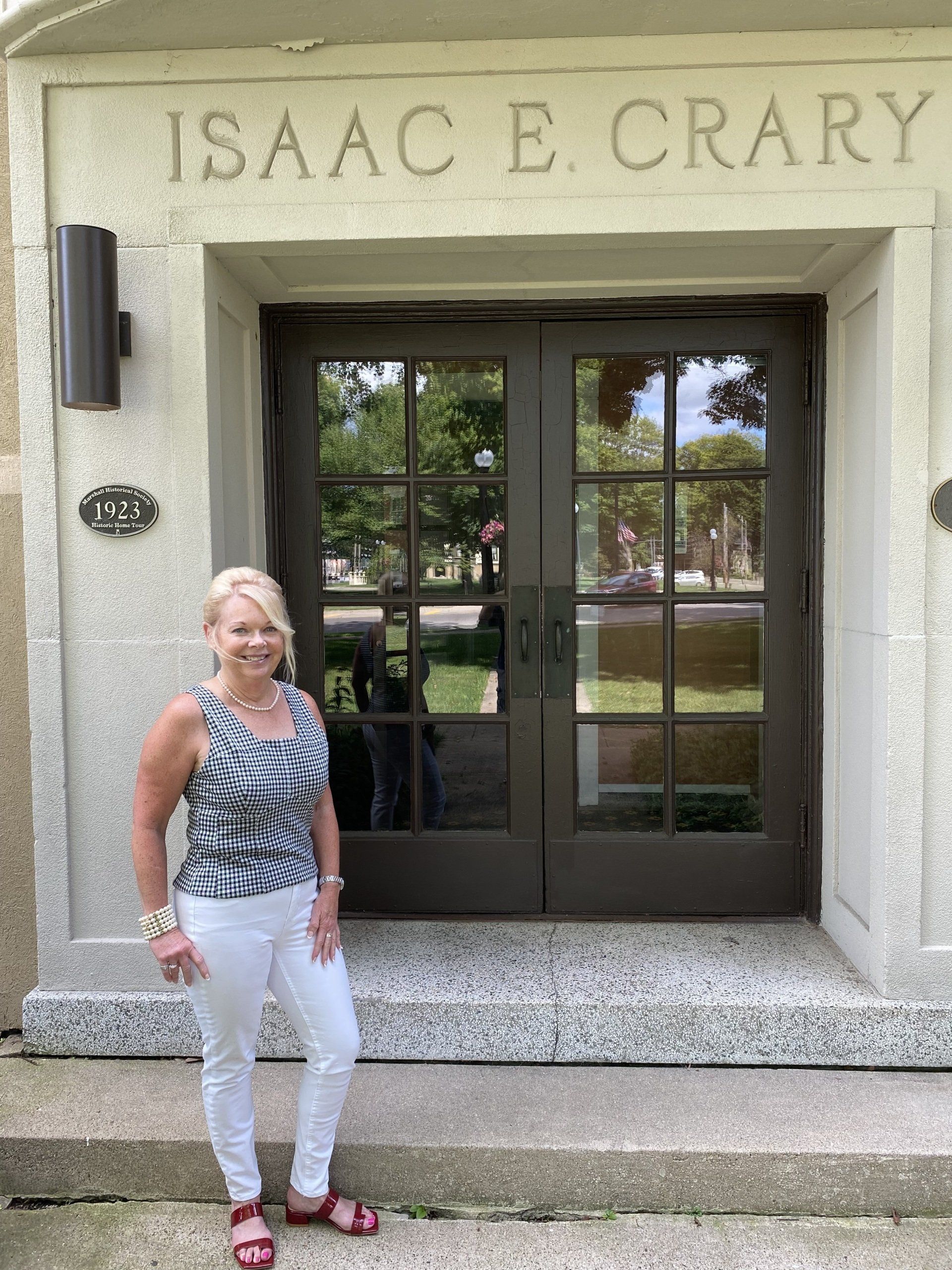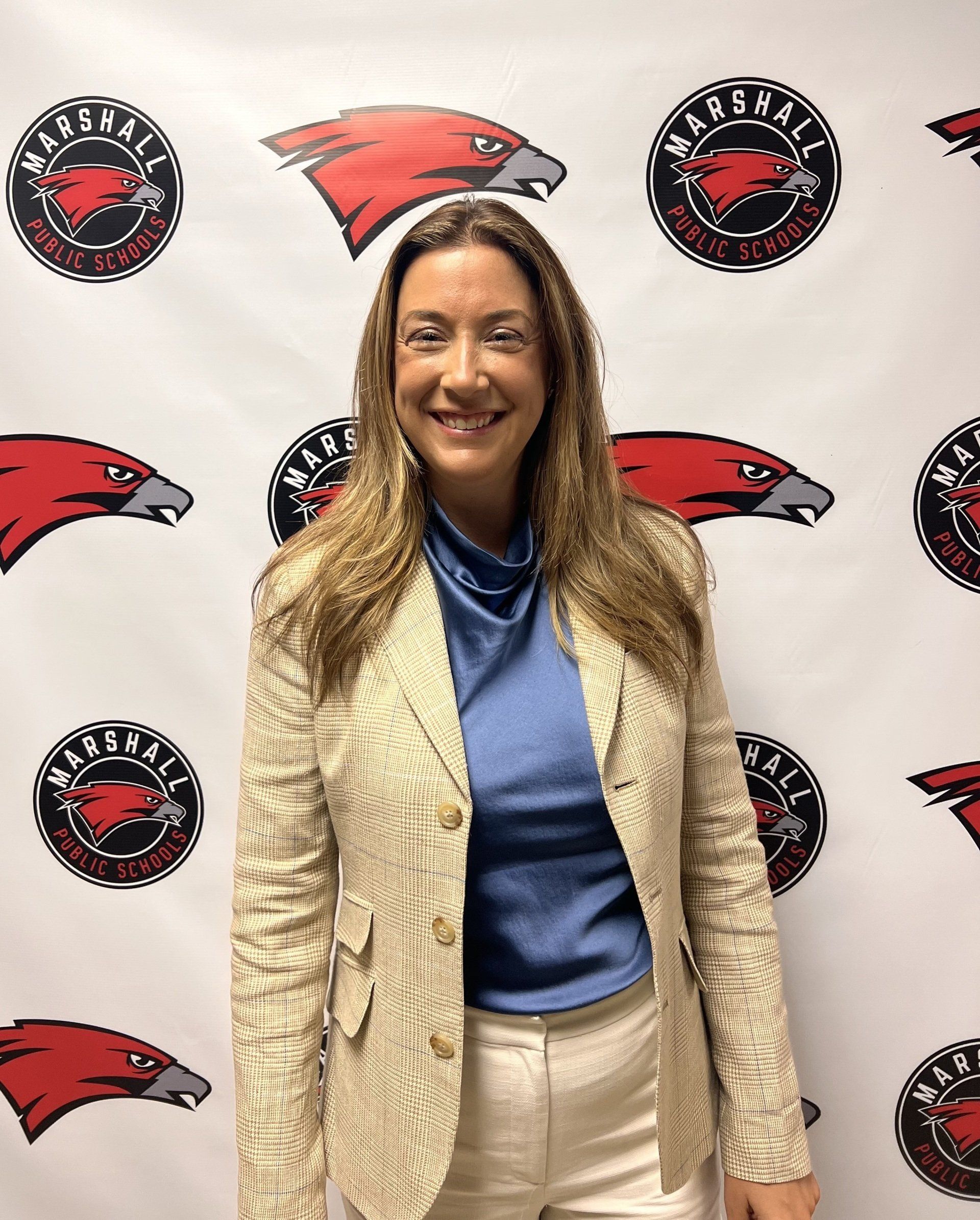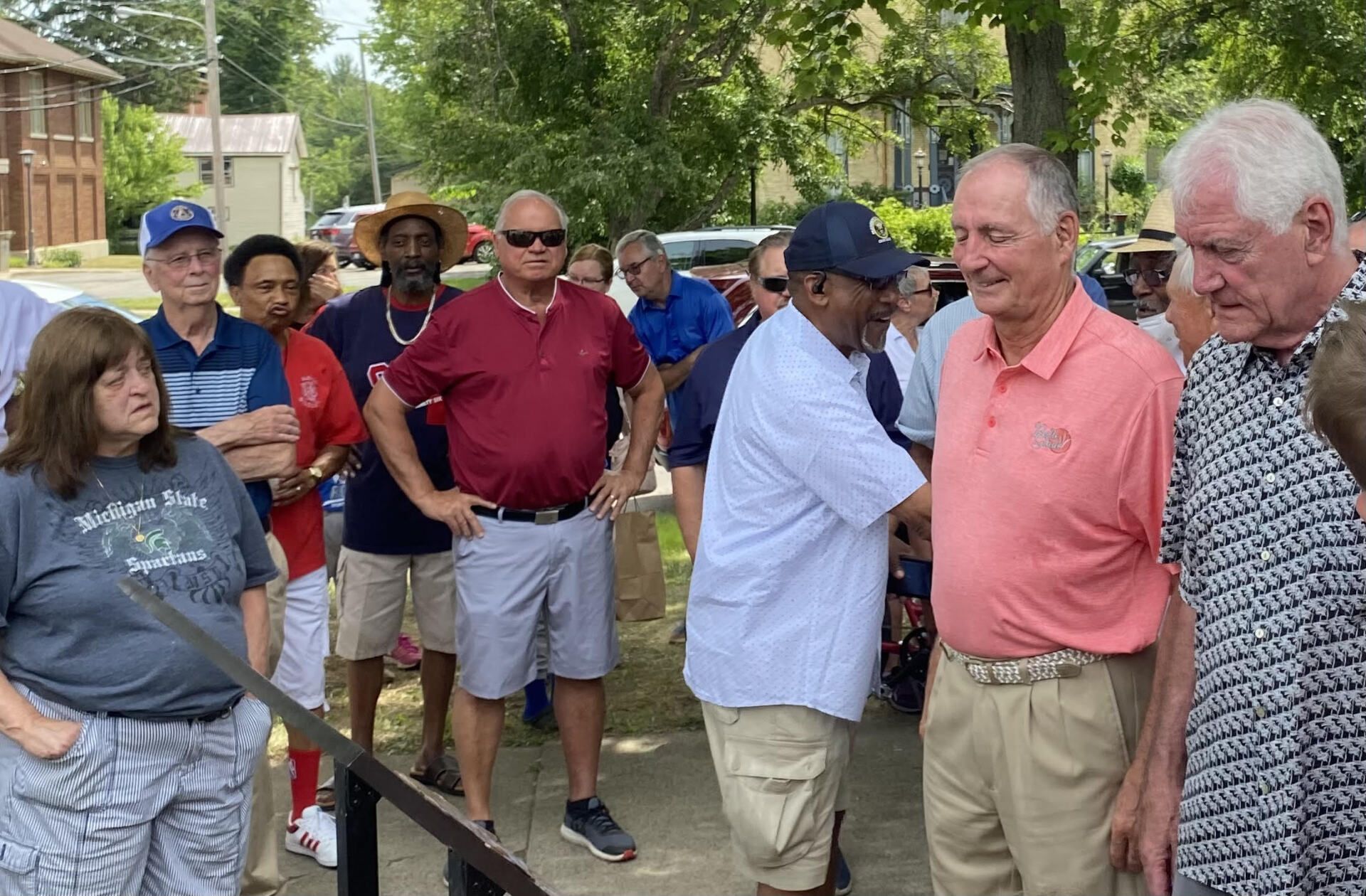MPS Board passes ‘Return to Learning Plan’
By a 5-2 vote Aug. 10, the Marshall Public Schools Board of Education passed the district’s “Return to Learning Plan” that will have most students in the classroom at the start of the 2020-21 school year which begins Aug. 26.
On June 30, Gov. Gretchen Whitmer issued her Executive Order 2020-142 and shared Michigan’s Return to School Roadmap. The Roadmap is aligned with Michigan’s Safe Start Plan, using the “six phase approach” as a basis for reopening schools.
The Roadmap provides requirements, recommendations and guidance unique for each phase under which schools may operate. As such, Whitmer requires each district in Michigan to submit a Board approved “Preparedness and Response Plan” to the local ISD on Aug. 17, and then to the Michigan Department of Education to be approved on Aug. 19.
Most of Michigan, including Marshall, is in Phase 4, which allows for in-person schooling with varying levels of safety protocols or a combination on in-person instruction and online instruction. In Phase 4, high levels of safety protocols would be implemented, and school grounds would be closed to outside groups and visitors.
If Michigan were to go back to Phase 3, then all instruction would be required to be conducted online.
The proposal the board considered and approved has K-5 students in class Monday, Tuesday, Thursday and Friday each week, with Wednesday being a virtual or online learning day.
For grades 6-12, half of all students would attend class on Monday and Tuesday, while the other half would attend Thursday and Friday with three days each week serving as an online learning.
All K-12 students are required to wear masks.
A recent, second parent survey indicated a 76% response rate, a rate Superintendent Randy Davis called “pretty strong.”
Those wanting virtual learning only totaled 29.8% across the district and 70.2% stating they wanted some level of in-person instruction.
All MPS students will be supplied with a laptop and students who chose the virtual-only option must stay with that option for the entire first semester before deciding to go back to in-person classes.
Prior to the vote, Superintendent Randy Davis gave a rundown on the proposal the board was to consider for in-person classes.
He spoke of area school districts receiving guidance from the Governor’s office through executive orders and the Calhoun County Public Health Department.
Davis said he other area superintendents meet weekly with Calhoun County Public Health Department Health Officer Eric Pressell to receive updates on the COVID-19 situation in the county.
“We hear from the ground at the health department what’s going on and if there are any unusual upticks,” said Davis. “For the past 59 days …we have not been above 3% in our seven-day average of positive cases. That’s a huge statistic and many times are under 2%. On Aug. 8 we were at 1.7% for the seven-day average. If it were over 4%, that would be the first time a flag would go up for the Health Department to start looking at other factors that may indicate something is going on and there’s an untick or increase in risk or in community spread.”
The number of positive cases per million in the county has fluctuated but has remain relatively low in recent weeks, said Davis.
“That has gone up and down since March,” said Davis. “The last time we were above 40, which is the benchmark for a red flag going up…was 42.5 positive cases per million on July 16. Since that time, we have gone below 40 per million. In fact, we are at 22.3 cases per million as of Aug. 8.
“We all agree those are the benchmarks we will look for. And if the Health Departments in any way feels there is any community spread or unusual circumstance or higher risk, they would then make the recommendation to us regardless of what phase we are in, to let us know that we should probably move to remote [learning].”
If that were to occur, Davis said MPS would have about seven days to get ready to completely move to remote learning.
“I am just really pleased the Health Department is giving us that direct guidance and feedback and will make a direct interaction when they need to,” said Davis.
Trustee Amanda Lankerd asked Davis on how the district planned to “maintain the rigor” for students in grade 6-12 going to in-person classes only two days a week.
“The rigor and relevance is going to be there,” said Davis. “It’s a continuation…every day is going to be another instructional day with another lesson plan tacked on and scaffolded on top of what they’re learning all the way through the week. Whether you’re in front of the teacher in person or if you are remote, that’s still going to be a continuation of learning all the way through.”
Davis noted that older students can tap in to do work from home when they best can tap in and be focused versus having students in front of a computer to simulate a school day.
“Synchronous instruction all day long puts the student in position to learn for six hours straight to mirror what they experience in the classroom and that’s not something we want to see,” said Davis. “That’s not a very good plan of action. So, we want to make sure there is a lot more flexibility, but they’re not being held accountable for anything less that what they would in any kind of in person or face to face [class].”
Socially distancing students in classroom would mean most class sizes would be in the 18-20 range at a maximum.
For example, based on the size of the classrooms at Harrington Elementary, with students 6 feet apart, would mean 19 students per room.
“What we have to remember for elementary and why we are doing four-day in person and one day remote is that they will be in cohort groupings,” said Davis. “We are going to try and teach those kids in cohorts as much as we possibly can so we can have accountability in case something should come off in regards to a COVID positive.”
Davis cited Health Department data that had when you have cohort grouping at the elementary level and you have social distancing and masks, you don’t have individual students connecting with individual students from more than 15 minutes at a time from less than 5 feet away.
“If they have masks on, they have social distancing, they’re in cohort, they’re not spending up close and personal time with each other, and they’re washing hands frequently… all of that is mitigating pretty good in regards to safety,” said Davis. “Is it absolute? Nothing is absolute, but it is the strongest practice we can put in place.”
Many teachers, noted Davis, have gone through Google certification to teach students online.
Trustee Richard Lindsey, who voted no on the plan along with Lankerd, said he “struggled” with the idea of sending students back into the classroom at this time.
“I appreciate everything the administration has done…I’m still struggling with what it looks like to be in the classroom with the children,” said Lindsey. “I understand that we’re hoping this is what’s going to happen, but I can’t see it in reality. I’m in a profession (legal) where the courts remain closed, but are starting to reopen, but I don’t trust adults to be together in large groups and we’re going to put teachers into this situation…I feel like if we waited a little bit longer and let some other people have some experience, then we can learn from what they do as opposed to putting our teachers into those positions and students into those positions.”
Trustee Shawna Gamble noted that “this is a very difficult decision for the seven of us to have to make.”
“We just hope that we are able to make the right decision for all of our kids,” Gamble added.
Board President Bill DeSmet agreed that this was a difficult decision to make.
“It’s virtually impossible to make everybody happy and give everybody something they are looking for,” said DeSmet. “I continue to be impressed with Randy and his team have put in front of us, trying to give every option we can to families and do everything we can to prepare students and teachers…I appreciate the fact that we are giving families two options and they do have solid choices to be able to make as far as what’s going to be the best fit for their family.”
The Board did pass unanimously the virtual learning aspect of the curriculum in the event the district goes back to Phase 3.
“This is to make sure we have all the flexibility that we need to be able to use all of our classes in a remote way,” said Davis.
Derek Allen, who is a parent of a fifth grader, said he was “naturally worried about the possibility of children returning to school in-person being a cause of an increase in infections in our community.”
“However, I am also worried about my son and other students in the district being able to learn as much virtually as they would in the presence of the high caliber teachers we have throughout our buildings,” said Allen. “With that said though, I have a great deal of confidence in Marshall Public Schools’ leadership to ensure that no matter what, my son and others receive the quality education they need and deserve while also taking every possible step to ensure their safety.”
Ginger Obermyer, who has a second grader, said she is “a little nervous” about sending her child to school during the pandemic.
“I feel Marshall Public Schools has prioritized the health, safety and emotional well-being of our family,” said Obermyer, who also has a GSRP student “I am thankful MPS has given us choice - whether we choose to do in person or online is up to the families and students unique needs. I have chosen in person and I am excited for him to get back to some stability and socialization with friends and the MPS staff.”
Aislynn Melton, who has three daughters who will be returning to in-person classes (two of which were on the cover), said sending her girls back to school was not an easy decision to make for she and her husband.
“I have been so undecided about them going back to school in-person,” said Melton. “I’m still not 100% sure I’m making the right choice. In-person is what my husband and I have decided would be the best fit for our girls. We feel they need the social interaction with their peers and the physical presence of their teacher. I would have preferred them easing into the school year at the elementary level, possibly going two days a week, like the middle school and high school for the first semester. However, I am happy that Marshall has worked to provide options for families.”
Sarah Mannes has a third and fourth as well as a seventh and 11th grader in MPS and she noted that she and her husband did not choose the in-person option for their kids.
“We were able to work out a work-from-home situation with his job and decided to try and keep our kids home for at least the first semester,” said Mannes. “We believe our kids would do much better at school, in their classrooms. However, with how this pandemic has been, we had to base our decision on what we think is best for them.”
She added that she “hopes and prays” the return to school will work out.
“It seem to have started out being a good idea,” said Mannes. “However, with current trends, it seems like the chance for exposure may increase and then what? All of these at-school kids are going to be forced home, and it just seems this would be yet another disruption for them. There is no easy answer here. I believe people are doing what they believe is the best for their family and their lifestyle, but I worry that all of this energy and hard work the school and staff have put into getting schools back up and running will be for too small of gains.”















